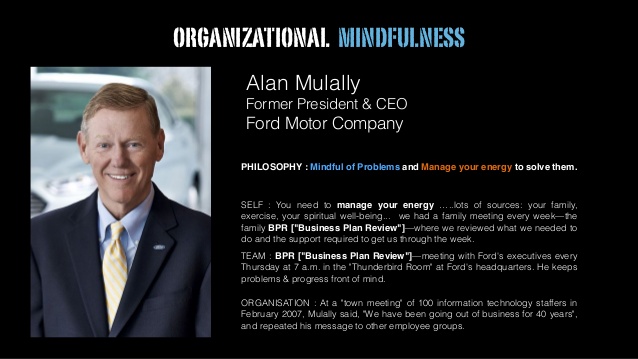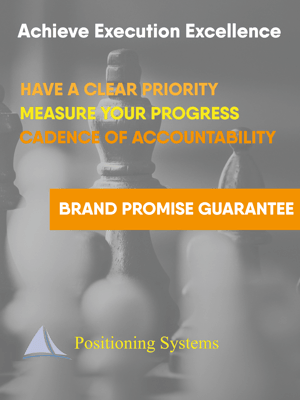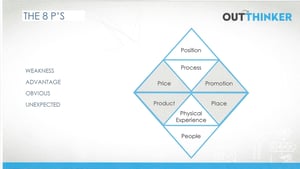![]() Do you struggle to get high performance from your leadership team?
Do you struggle to get high performance from your leadership team?
Do you feel your organization puts up with mediocre performance?
American Icon: Alan Mulally and the Fight to Save Ford Motor Company by Bryce G. Hoffman shares insights on how to encourage, inspire, and make your team accountable. Mulally turned Ford Motor Company around using BPR’s (business plan review) and SAR’s (special attention review).
BPR’s and SAR’s are principles, resources, and tools we share with our Scale Up customers.
BPR’s are Scale Up’s Meeting Rhythms. They establish a Cadence of Accountability.
Lack of Leadership & Accountability at Ford
When Alan Mulally met with Bill Ford to consider becoming CEO of Ford Motor Company there were a lot of concerns.
“The operating people are on quicksand,” Ford told Mulally. “I need help.” Mulally realized Ford’s problems were serious.
![]() Mulally explained how, at Boeing, his entire leadership team participated in a lightning-fast analysis of the entire business every Thursday morning. Each direct report delivered a brief status update highlighting anything that had changed since the previous week’s meeting. It was the centerpiece of Mulally’s management philosophy. He would use it in Dearborn. (See Scale Up Weekly Meeting Agenda)
Mulally explained how, at Boeing, his entire leadership team participated in a lightning-fast analysis of the entire business every Thursday morning. Each direct report delivered a brief status update highlighting anything that had changed since the previous week’s meeting. It was the centerpiece of Mulally’s management philosophy. He would use it in Dearborn. (See Scale Up Weekly Meeting Agenda)
“This is going to be a culture shock,” Ford cautioned.
The Board’s Expectations
Bill Ford wanted to make sure Ford’s Board of Directors agreed with the decision to hire Mulally. Two board members, Hockaday and Thornton, met Mulally for lunch. They quickly went from skeptics to salesman.
They had one concern.
“Alan, if the board offers you this job and you take it, you need to understand that there are no sacred cows,” Hockaday told Mulally. “Any friends of Bill that are in the wrong positions or you conclude are not the right guys, you can get rid of them—and Bill will confirm that.”
Mulally shook his head. “That’s not an issue, because I’m not going to have to get rid of many people,”
Mulally’s response was worrisome to Hockaday and Thornton. They believed the time had come for bloodletting at the top of the house in Dearborn.
The weakness of Ford’s bench prompted them to look outside the company for a CEO in the first place.
“How do you come to that conclusion?” Hockaday asked. Mulally responded by outlining his system of weekly meetings for them, just as he had for Ford. He told them this approach enforced extreme accountability on a weekly basis. It left no hiding place for those not committed to executing their part of the business plan.
“It’s likely that a lot of people at Ford aren’t used to that, and they will self-select out,” Mulally said. “I won’t have to do it.”
Learn more about Mulally and one challenge he faced in this 2 minute video:
Ford Motors Meeting Week
Mullaly’s first week was “meeting week” at Ford Motor Company. Each month Ford’s senior executives sat through one agonizing caucus after another, each devoted to a different issue or facet of the company’s operations. There were meetings to discuss Ford’s finances, meetings to discuss sales, meetings to discuss new products.
Since Ford’s executives seemed to like meetings so much, Mulally asked his secretary to schedule one more. When he had them all together, Mulally started laying down his law.
“There are too many meetings,” he told them. “When do you have time to think about the customer?”
Nobody answered.
From now on, Mulally continued, there would be only one corporate-level meeting—his “business plan review,” or BPR. It would be held every week on the same day, at the same time, in the same place. Attendance would be mandatory for all senior executives.
 Each executive would personally deliver succinct status reports and updates on their progress toward the company’s turnaround goals. This would not be a forum for discussion or debate. Any issues that required more in-depth consideration by the entire leadership team would be taken up in a “special attention review,” or SAR, immediately following the BPR. (See Scale Up Collective Intelligence) The idea was to keep the main meeting focused on the big picture.
Each executive would personally deliver succinct status reports and updates on their progress toward the company’s turnaround goals. This would not be a forum for discussion or debate. Any issues that required more in-depth consideration by the entire leadership team would be taken up in a “special attention review,” or SAR, immediately following the BPR. (See Scale Up Collective Intelligence) The idea was to keep the main meeting focused on the big picture.
“The data sets you free,” he said with a smile.
“We are the decision makers,” Mulally said. “We need to make decisions and not pass the buck.”
Ford executive unwilling, or unable to perform did self-select themselves out. The result, Ford made a dramatic turnaround, and Ford Motor Company was the only US car dealer not to get a government bailout.
Mulally BPR’s changed Ford’s culture, eliminated office politics. More importantly it created a harmonious culture of accountability. Learn why at Which is Best Individual Meetings or Team Meetings? Personal Story on Accountability.
 Growth demands Strategic Discipline.
Growth demands Strategic Discipline.
Strengthen your teams performance and accountability!
Positioning Systems is obsessively driven to improve your business and your team’s execution. 3 Strategic Disciplines: Priority, Metrics and Meeting Rhythms help your business dramatically improve your forecasting, individual, and team performance creating alignment.
As an Execution Decision, Strategic Discipline increases your Profitability.
Positioning Systems helps your business achieve these outcomes on the Four most Important Decisions your business faces:
|
DECISION |
RESULT/OUTCOME |
|
PEOPLE |
|
|
STRATEGY |
|
|
EXECUTION |
|
|
CASH |
|
We help your business Achieve Execution Excellence.
Reach your profit objectives and more!
Positioning Systems helps mid-sized ($5M - $250M) business Scale-UP. We align your business to focus on Your One Thing! To achieve growth, you need to evolve in today’s rapidly changing economic environment. Have you been avoiding a conversation on how you can successfully grow your business? Contact dwick@positioningsystems.com to Scale Up your business! Take our Four Decisions Needs Assessment to discover how your business measures against other Scaled Up companies. We’ll contact you.
 Next Blog: A Better SWOT
Next Blog: A Better SWOT
In 8 P’s – A Powerful Way to Discover Strengths, Weaknesses, Trends I shared why this tool is superior to the traditional SWOT, and better then SWT. Last week I met with a former E-Myth customer to help his business craft a plan for 5-10 years. More on why the 8 -P’s and what we learned next blog.






.jpeg?width=150&height=135&name=Hand%20with%20marker%20writing%20the%20question%20Whats%20Next_%20(1).jpeg)

